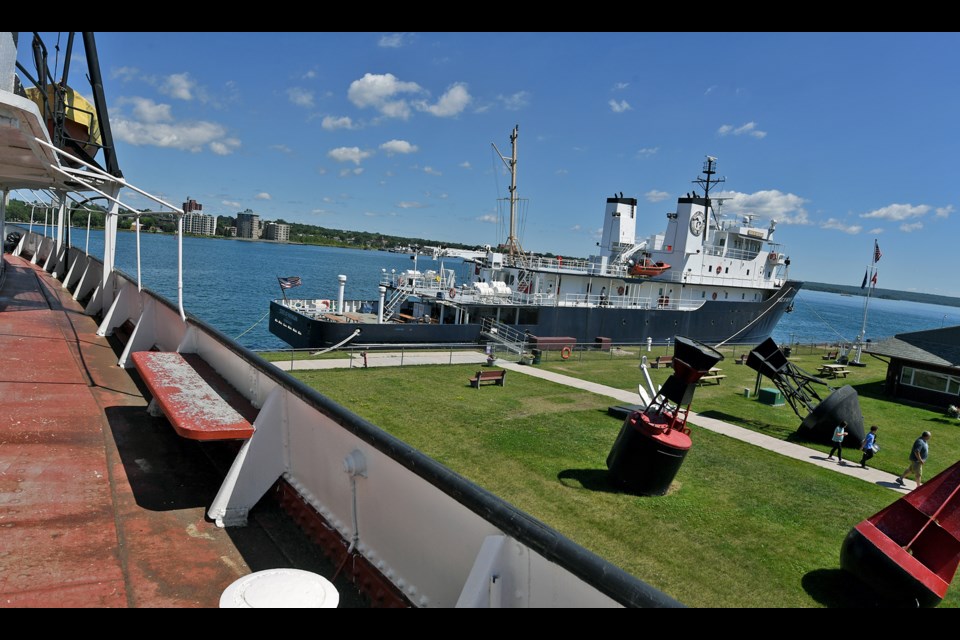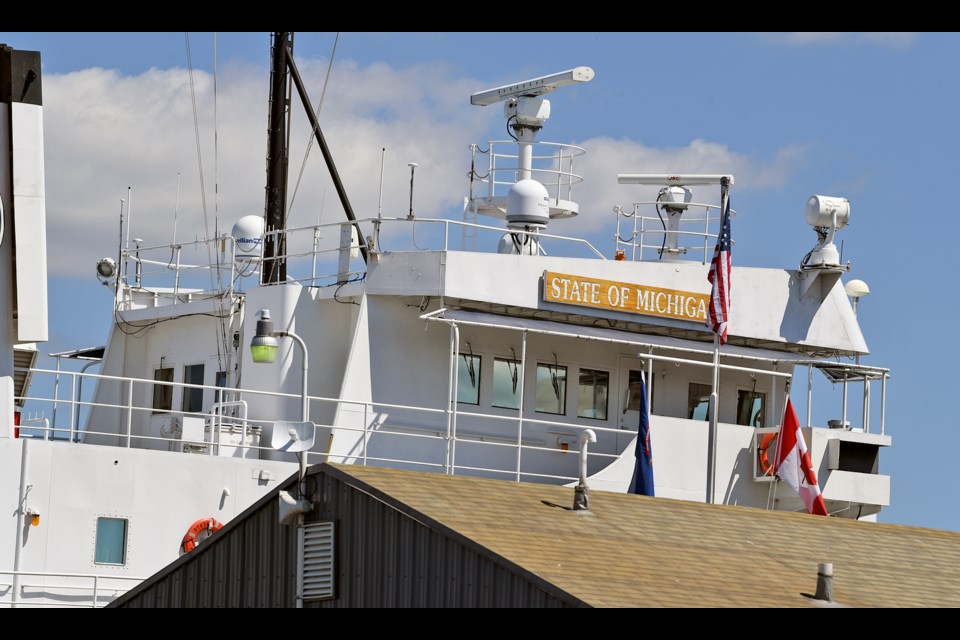After launch in 1985, the USS Persistent tracked Soviet — then Russian — submarines until 1995, before being transferred to the Coast Guard in 1998
John Shibley
2 days ago


.jpg;w=960;h=640;bgcolor=000000)

During the Cold War it tracked submarines as the Navy’s USS Persistence. Now the 68-meter ship trains the next generation of Great Lakes ship captains and chief engineers.
It is T/S State of Michigan with its complement of 50 cadets from the Great Lakes Maritime Academy (GLMA) in Traverse City. After four years of book learning in the classroom and sharpening seamanship skills on the Michigan, cadets will take extensive exams to get licensed as commercial deck officers and engineers.
The ship and its student crew stop in Sault, MI roughly twice a month during training trips on the St. Marys and Lake Superior that start in May and end in October. Look for the Michigan moored near museum ship Valley Camp’s stern.
“The St. Marys is a very unique place to train,” said Chuck Miller, a GLMA instructor and the Michigan’s first mate. “It’s got some of the most difficult pilotage in the world. You’re moving a vessel around 90-degree turns in current, often in ice.”
Over the course of four years, Miller’s students make two-week trips on the Michigan that focus on the Detroit, St. Clair, and St. Marys rivers as well as Lake trips to the ports of Duluth, Buffalo, and Chicago.
“Cadets in the deck officer program do everything on the Michigan that a working mate would do: on-helm steering the ship, conducting navigation chart work, and commanding wherever the ship goes,” said Miller.
“Students in the engineering track stand watch with an engineering officer,” Miller added. “They conduct rounds, monitor propulsion in the engine room . . . all the way to fixing door handles. If there’s anything that can break on a boat, cadets are taught how to fix it.”
The “at sea” portion of training continues with an academy-placed, 100-day internship on a Great Lakes freighter. It is here where deck officer cadets learn how to manage a crew to load cargo, and engineers get a baptism in holding the mechanics of a ship together.
Students then hone skills with an “ocean project” that sees them work another 100 days on their choice of a Great Lakes or ocean freighter. Some students even choose cruise ships or oil tankers, depending on where they want to build a career.
At the end of it all, cadets earn a baccalaureate degree in Maritime Technology from North Central Michigan College, the GLMA’s home institution. At any given time, there are 200 students in the program.
Miller, originally fom Las Vegas, Nev., is a graduate of the deck officer program. He ended up as a first mate on the Michigan and an academy instructor in a rather roundabout way.
“After working as a golf pro and an EMS technician out of high school, I enlisted in the Coast Guard,” he said. “There isn’t much water in Las Vegas, but the Guard made me fall in love with large bodies of it. After eight years, I took my educational benefits and went through the GLMA’s deck officer program between 2015 and 2019.”
It is T/S State of Michigan with its complement of 50 cadets from the Great Lakes Maritime Academy (GLMA) in Traverse City. After four years of book learning in the classroom and sharpening seamanship skills on the Michigan, cadets will take extensive exams to get licensed as commercial deck officers and engineers.
The ship and its student crew stop in Sault, MI roughly twice a month during training trips on the St. Marys and Lake Superior that start in May and end in October. Look for the Michigan moored near museum ship Valley Camp’s stern.
“The St. Marys is a very unique place to train,” said Chuck Miller, a GLMA instructor and the Michigan’s first mate. “It’s got some of the most difficult pilotage in the world. You’re moving a vessel around 90-degree turns in current, often in ice.”
Over the course of four years, Miller’s students make two-week trips on the Michigan that focus on the Detroit, St. Clair, and St. Marys rivers as well as Lake trips to the ports of Duluth, Buffalo, and Chicago.
“Cadets in the deck officer program do everything on the Michigan that a working mate would do: on-helm steering the ship, conducting navigation chart work, and commanding wherever the ship goes,” said Miller.
“Students in the engineering track stand watch with an engineering officer,” Miller added. “They conduct rounds, monitor propulsion in the engine room . . . all the way to fixing door handles. If there’s anything that can break on a boat, cadets are taught how to fix it.”
The “at sea” portion of training continues with an academy-placed, 100-day internship on a Great Lakes freighter. It is here where deck officer cadets learn how to manage a crew to load cargo, and engineers get a baptism in holding the mechanics of a ship together.
Students then hone skills with an “ocean project” that sees them work another 100 days on their choice of a Great Lakes or ocean freighter. Some students even choose cruise ships or oil tankers, depending on where they want to build a career.
At the end of it all, cadets earn a baccalaureate degree in Maritime Technology from North Central Michigan College, the GLMA’s home institution. At any given time, there are 200 students in the program.
Miller, originally fom Las Vegas, Nev., is a graduate of the deck officer program. He ended up as a first mate on the Michigan and an academy instructor in a rather roundabout way.
“After working as a golf pro and an EMS technician out of high school, I enlisted in the Coast Guard,” he said. “There isn’t much water in Las Vegas, but the Guard made me fall in love with large bodies of it. After eight years, I took my educational benefits and went through the GLMA’s deck officer program between 2015 and 2019.”
Miller has since worked as third and second mates with two Great Lakes shipping companies: Grand River and the Great Lakes Fleet, which used to be owned by US Steel. He was hired as the Michigan’s first mate in 2020 and, earlier this year, as GLMA instructor.
“We do get a lot of vets like me from all branches,” he said. “We have yet to see the Space Force, but I’m sure that’s coming.”
Another veteran ended up on the Great Lakes in a roundabout way: the T/S State of Michigan. After launch in 1985, the USS Persistent tracked Soviet — and then Russian — submarines until 1995 before being transferred to the Coast Guard in 1998. The Great Lakes Maritime Academy welcomed the Cold War vet in 2002, when it gave the boat its present name.
“We do get a lot of vets like me from all branches,” he said. “We have yet to see the Space Force, but I’m sure that’s coming.”
Another veteran ended up on the Great Lakes in a roundabout way: the T/S State of Michigan. After launch in 1985, the USS Persistent tracked Soviet — and then Russian — submarines until 1995 before being transferred to the Coast Guard in 1998. The Great Lakes Maritime Academy welcomed the Cold War vet in 2002, when it gave the boat its present name.
No comments:
Post a Comment